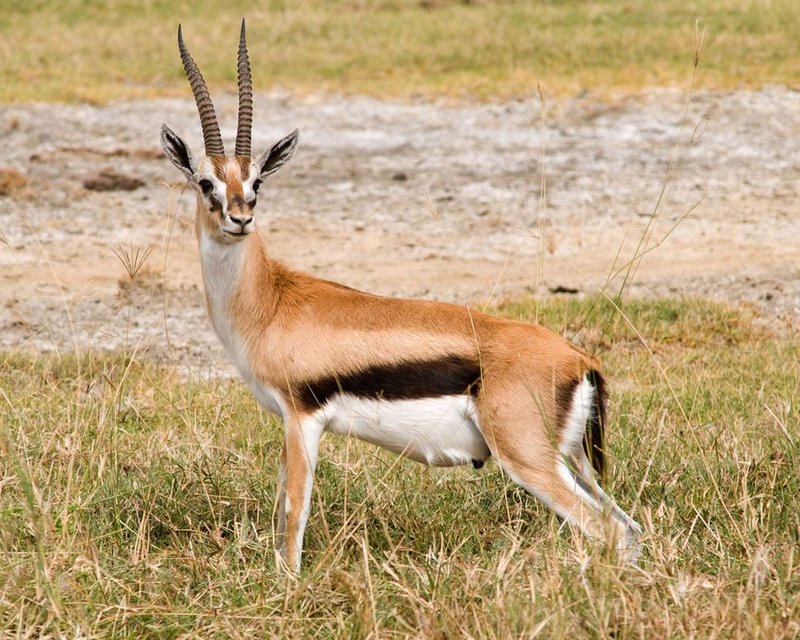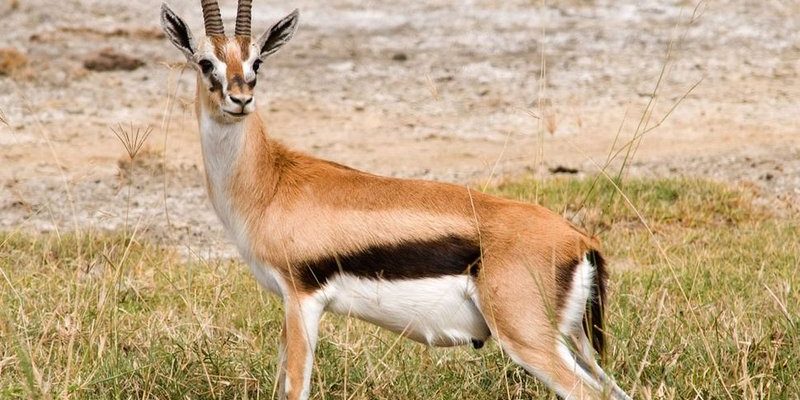
Imagine sitting across from a friend at your favorite café, talking about your favorite animals. You might share stories of how gazelles can run faster than you can blink or their incredible social structures. It’s not just their speed that’s impressive; it’s the way they’ve evolved to thrive in their natural habitats. So grab a cup of coffee, and let’s dive into some captivating facts about the gazelle!
1. Gazelles are Built for Speed
One of the first things you notice about gazelles is their sleek, aerodynamic bodies. These animals are designed for speed, and they can run at incredible paces—up to 50 miles per hour! That’s about as fast as a car on the highway. Their long legs and lightweight frames allow them to cover vast distances quickly, which is essential for escaping predators like cheetahs and lions.
Why is speed so crucial for survival? Gazelles rely on their ability to sprint away from danger to survive in the wild. Think about it like a high-stakes game of tag, where the fastest players always stay in the game. When they spot a threat, their first instinct is to run. But here’s the thing: speed alone isn’t enough. Gazelles also have impressive agility, allowing them to make quick turns and dodge predators. This combination of speed and agility makes them one of the savanna’s most exciting animals to watch.
2. They Have a Unique Social Structure
Gazelles are social animals that often live in herds. These groups can range from just a few individuals to hundreds of gazelles. But it’s not just about sticking together for safety; there’s a fascinating social hierarchy among them. Within a herd, you’ll find dominant males who lead and protect the group, while females usually stay close to their young.
You might be wondering how these social dynamics work. Well, male gazelles are often seen engaging in displays of strength, like jumping high into the air or running fast to impress potential mates. This behavior helps establish their dominance and attract females. It’s a bit like a beauty contest, where the strongest and most agile get the chance to breed. This social structure not only helps in mating but also provides safety in numbers against predators.
3. Gazelles are Herbivores with a Special Diet
What do gazelles eat? These animals are strict herbivores, which means they consume plants only. Their diet mainly consists of grasses and leaves. In the wild, they often seek out different types of vegetation, depending on the season. This adaptability allows them to thrive in various environments, from savannas to arid deserts.
Interestingly, gazelles have a unique way of finding food. They use their keen sense of smell and eyesight to locate the best grazing spots. Picture a gourmet restaurant; they’re the discerning diners, always looking for the freshest greens! Their ability to adapt their diet according to the availability of food ensures they stay healthy, even in tough conditions.
4. Gazelles Exhibit Interesting Behaviors
Gazelles are not just about speed and social structures; they also display some fascinating behaviors. One notable behavior is their “stotting” or “pronking.” What’s that, you ask? It’s when a gazelle jumps high into the air with its legs straight. This act isn’t just for show; it serves a purpose. By pronking, they signal to predators that they’re healthy and fit, making them a less appealing target.
You might think of this behavior as a clever tactic. It’s as if they’re saying, “Hey, predator, I’m too fast for you!” This kind of behavior can deter potential threats, allowing gazelles to escape. It’s a testament to their intelligence and adaptability, proving that there’s more to these animals than meets the eye.
5. Gazelles are Found Across Africa and Asia
While many people associate gazelles exclusively with Africa, you can actually find them in parts of Asia, too. There are several species of gazelles, each adapted to their specific environments. For instance, the Grant’s gazelle roams the savannas of East Africa, while the Arabian gazelle can be found in the deserts of the Arabian Peninsula.
Each species has unique adaptations that help them thrive in their habitats. Take the desert-dwelling gazelles, for example. They can go without water for long periods, getting moisture from the plants they consume. It’s pretty impressive how these animals have evolved to survive in such diverse environments. Think of them as nature’s little survivors, each with its own tricks to handle the challenges of their surroundings.
6. Gazelles Play a Key Role in Their Ecosystem
Every creature in an ecosystem has a role, and gazelles are no exception. As herbivores, they help maintain the balance of plant life in their habitats. By grazing on grasses and other vegetation, they prevent overgrowth and promote the health of the environment. This, in turn, supports various other species—both plant and animal.
Consider this: when gazelles graze, they create spaces for other plants to grow, which attracts insects and other herbivores. This chain reaction supports a rich ecosystem, demonstrating that even the smallest actions can have a significant impact. It’s a multi-layered relationship, where gazelles contribute to the health of their environments in many ways.
7. They Face Threats from Humans and Predators
Despite their incredible adaptations, gazelles face multiple threats. Habitat loss due to human activities, like farming and urban development, is a significant issue. Instead of wide-open spaces to roam, many gazelles now find themselves squeezed into smaller areas. This makes it harder for them to find food and evade predators.
Additionally, poaching remains a threat to certain gazelle species. These elegant animals are hunted for their meat and hides, putting additional pressure on their populations. It’s heartbreaking to think that while they’re doing their best to survive, human actions can lead to their decline. Conservation efforts are crucial in ensuring these beautiful creatures thrive for generations to come.
8. Gazelles Have Unique Communication Methods
How do gazelles communicate with each other? Surprisingly, they have a range of vocalizations and body language cues to express themselves. For instance, they may use soft bleats to call out to one another or snorting sounds when they sense danger. These vocalizations are like their secret language, helping them stay connected.
Body language is just as important. A gazelle might lower its head as a sign of aggression or raise its tail as a warning to others. It’s fascinating how they can convey so much without speaking a word. This communication helps maintain order within the herd and keeps everyone informed about potential threats.
9. Gazelles Have a Lifespan of 10–12 Years
In the wild, gazelles typically live around 10 to 12 years. However, their lifespan can vary depending on factors like their environment, availability of food, and threats from predators or humans. When in protected areas or reserves, they often live longer due to reduced stress and fewer threats.
You might picture their lives as a series of adventures, each day a blend of foraging, socializing, and evading danger. But living in the wild isn’t easy; every day is a challenge. Gazelles must stay vigilant, always aware of their surroundings, which can take a toll on their health and longevity.
10. Gazelles Inspire Art and Culture
Throughout history, gazelles have captured the imagination of artists and writers. Their elegance and beauty have made them symbols of grace in various cultures. In many African traditions, gazelles represent the spirit of freedom and adaptability. This cultural significance highlights not just their physical beauty but also the deeper connections humans have with these animals.
You might find gazelles depicted in ancient art, literature, and even modern media. Whether in paintings, sculptures, or stories, they serve as reminders of the beauty of nature and the importance of conservation. Their presence in our culture encourages us to appreciate and protect the natural world.
Closing Paragraph
Gazelles are more than just beautiful animals; they’re fascinating creatures with unique adaptations and social structures. From their incredible speed to their roles in the ecosystem, there’s so much to admire about these elegant animals. Learning about gazelles not only broadens our understanding of wildlife but also emphasizes the importance of conservation. As we continue to explore the natural world, let’s remember to appreciate and protect these amazing creatures and their habitats.

